Which Home Projects Will Be Popular in the Next Five Years?
Homeowners are thinking ahead—here’s what’s on their minds


They say it’s wise to have a five-year plan. That may be true in business, but it turns out savvy homeowners are also planning well in advance when it comes to sprucing up their homes.
More than 60% of homeowners surveyed in Angi's 2023 State of Home Spending Report say they plan to make additional large home investments over the next five years. According to the report, when homeowners have more time to plan and budget, their desire to do more substantial work on their houses grows significantly.
So, what exactly is on the horizon for American homeowners looking to improve their quality of home life? Here are the nine most popular home improvement projects to expect in the next five years.
The 9 Most Popular Home Improvement Projects on People’s To-Do Lists
According to Angi’s 2023 State of Home Spending Report, the most coveted project homeowners want to tackle in the next five years is a bathroom remodel—and some even want to add an extra bathroom to their home. But there’s more on the calendar than a shiny new clawfoot tub. Read on for the most popular home projects due to take homeowners by storm in the next five years.
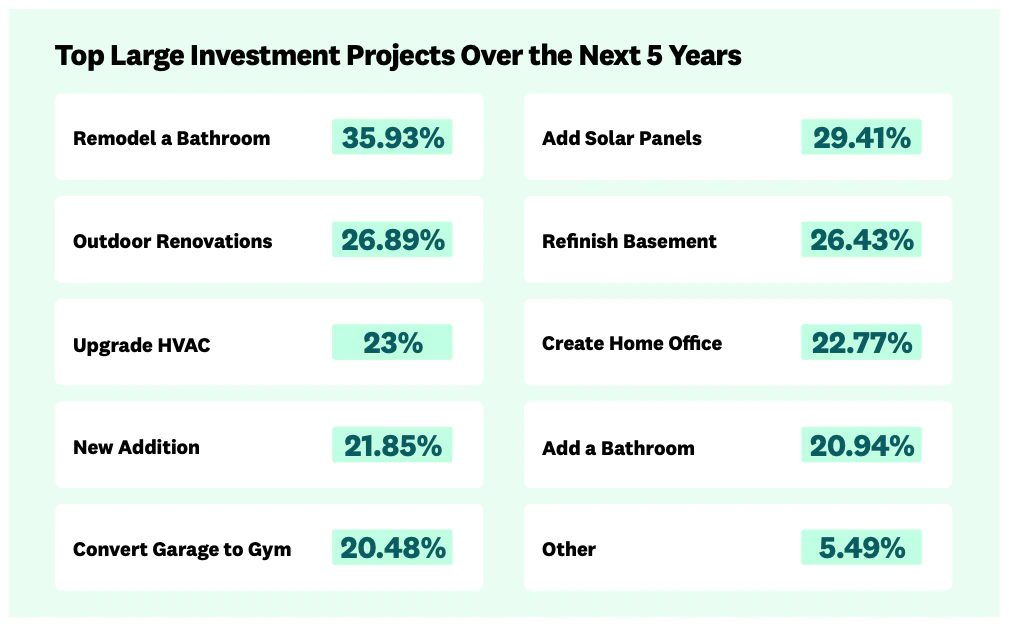
Remodeling a Bathroom
The most popular home project people will take on in the next five years is a bathroom remodel, with 36% of homeowners saying they’re planning the upgrade.
Bathroom remodels cost between $6,600 and $16,700, depending on factors like your bathroom's size and the type of upgrades you want. On the high end, homeowners looking to go all out and splurge on a total bathroom overhaul with high-end appliances could spend upwards of $28,000.
In general, it's best to call a professional bathroom remodeler near you to tackle this in-depth job. While some minor bathroom upgrades are DIY-friendly (think faucet replacement or installing a fancy new showerhead), more extensive work like plumbing and electrical wiring requires the expertise of a licensed pro.
Installing Solar Panels
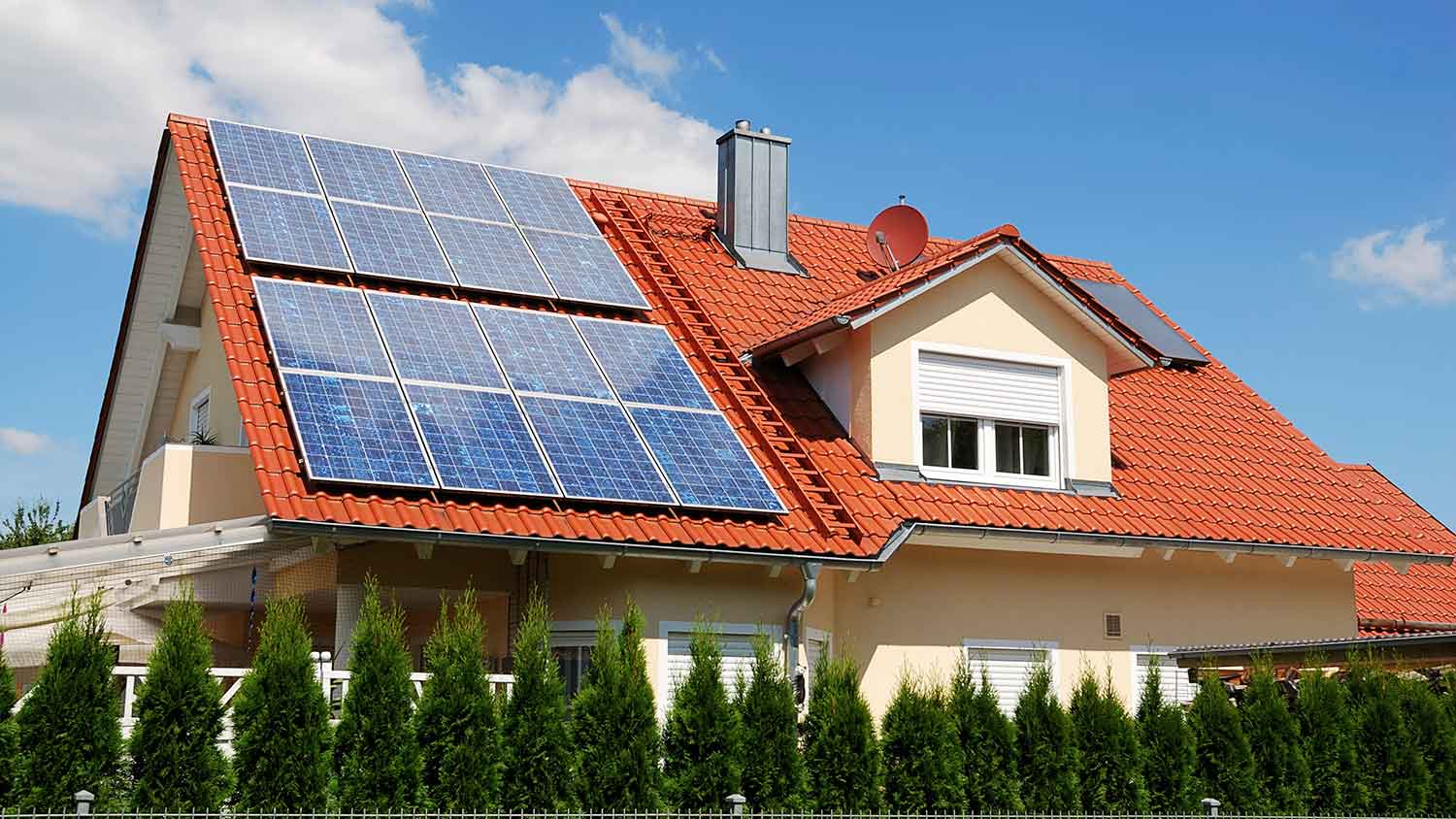
As solar technology evolves to offer a clean energy alternative that saves money over the long term, it’s no wonder why many homeowners are budgeting to add solar panels to their homes.
According to the 2023 State of Spending Report, 29% of those surveyed said they plan to install solar panels within the next five years. Installing solar panels costs about $26,000 on average, though it ranges between $4,500 and $50,000 based on your solar system’s size, the type of solar panel you choose, the wattage, and more.
Solar installation isn’t a DIY-friendly job, but there are ways to save money on professional installation. For instance, you can take advantage of the Solar Investment Tax Credit, which was passed in 2022 as part of the Inflation Reduction Act. The tax credit lets homeowners claim federal income taxes on the price of their solar panel systems. And if you don't have all the cash to pay upfront, fear not—you can lease your solar panels or take out a solar loan to make this home upgrade more affordable.
For many homeowners, investing in solar energy yields fantastic long-term savings on their utility bills. Most solar systems save households between $650 and $1,500 per year on their electric bills.
Doing Outdoor Renovations
About 27% of homeowners are planning some outdoor renovations in the coming years.
Landscaping costs between $1,300 and $5,800, with most homeowners spending about $3,450 for an outdoor renovation project.
Front yard landscaping boosts curb appeal, while backyard upgrades like patios, fire pits, outdoor kitchens, and gazebos can improve quality of life.
Whether it's brand-new hardscaping or something as simple as a few new flower beds, you can call a local landscaper to help you execute your vision. If you need help planning a new outdoor layout, you should bring in a landscape architect near you to create a design.
Refinishing a Basement

About 27% of homeowners plan to refinish their basements over the next five years. Basements can be everything from gyms to hobby studios, so it’s no wonder many homeowners plan to capitalize on their home's unused square footage.
The average cost to finish a basement runs about $18,400, though it can range quite a bit depending on factors like basement size, whether you need new flooring and insulation, electrical work, plumbing, and more. On the high end, a basement remodel could cost upwards of $34,000 for a total overhaul.
If you're looking to revamp a small basement space, say 500 square feet, you could pay as little as $3,500 to $11,500.
A local basement finishing company can turn your lower level into an oasis of relaxation, a recreational area, guest quarters, or a workspace.
Upgrading an HVAC System to a Low-Emission Heat Pump System
Many homeowners—23% of those surveyed—are planning to upgrade their HVAC system to a low-emission heat pump system in the next five years. The benefits of such an upgrade include a more efficient energy source that can trim down your utility bills, with the added perk of government incentives.
For example, HEEHRA Rebates let qualifying homeowners save up to $14,000 on certain home upgrades, including the installation of new, more efficient heat pump systems. And the recent Energy Efficient Home Improvement Credit helps homeowners claim credit for 30% of what they pay to install upgraded heat pumps.
Upgrading an HVAC system to a more efficient heat pump system can save an estimated $500 per year in utility costs. But this type of upgrade is best left to a heating and cooling professional in your area.
Creating a Home Office
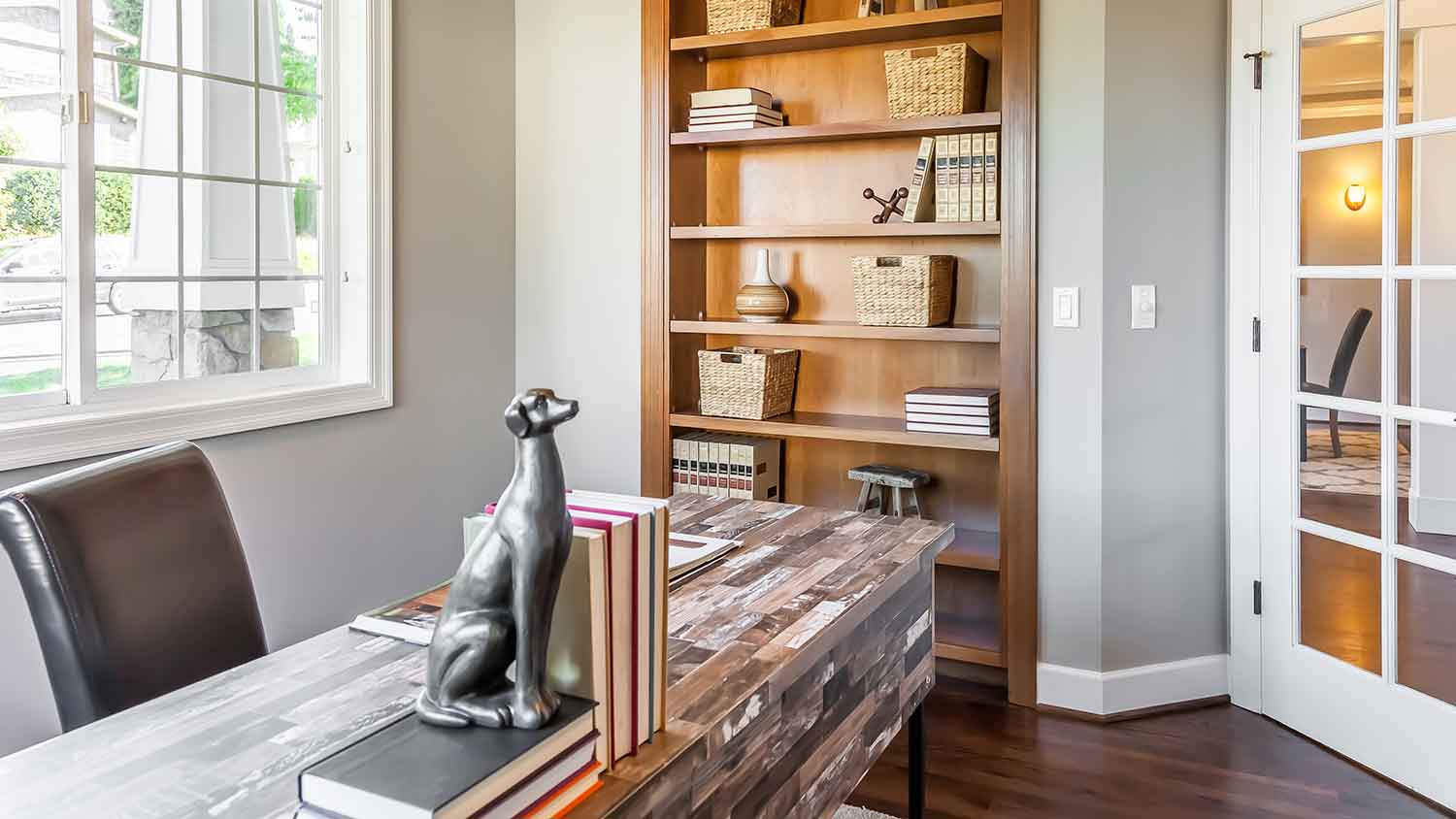
Since the onset of the COVID-19 pandemic, many homeowners have transitioned to remote work. With so many Americans working from home at least part of the time, it’s no wonder that 23% of people are budgeting to create a home office in the next few years.
The cost to build your own home office runs between $15,000 and $80,000, which comes to about $100 to $550 per square foot, according to HomeAdvisor. Building a home office often includes installing computer hardware and Wi-Fi and adding furnishings like desks, seating, bookshelves, and cabinets. For more extensive office upgrades, you can install soundproofing to minimize distractions and tweak the lighting to your comfort preferences. Some homeowners also upgrade their flooring.
Creating a simple home office by adding furniture to an unused room, like a small den or a large walk-in closet, is a feasible DIY project. For a full-room renovation, it’s best to call a local contractor to help.
Building an Addition
A popular long-term goal among homeowners over the next five years is to expand the square footage of their house—and add to their home’s possibilities—by building an addition. About 22% of homeowners will construct a home addition, which is a project that costs about $50,000 on average.
But the price of a home addition can vary quite a bit, depending on its size, location, and the materials you use. For instance, adding a new bedroom to your home could cost between $8,600 and $21,600, while adding a new kitchen runs between $48,000 and $95,000.
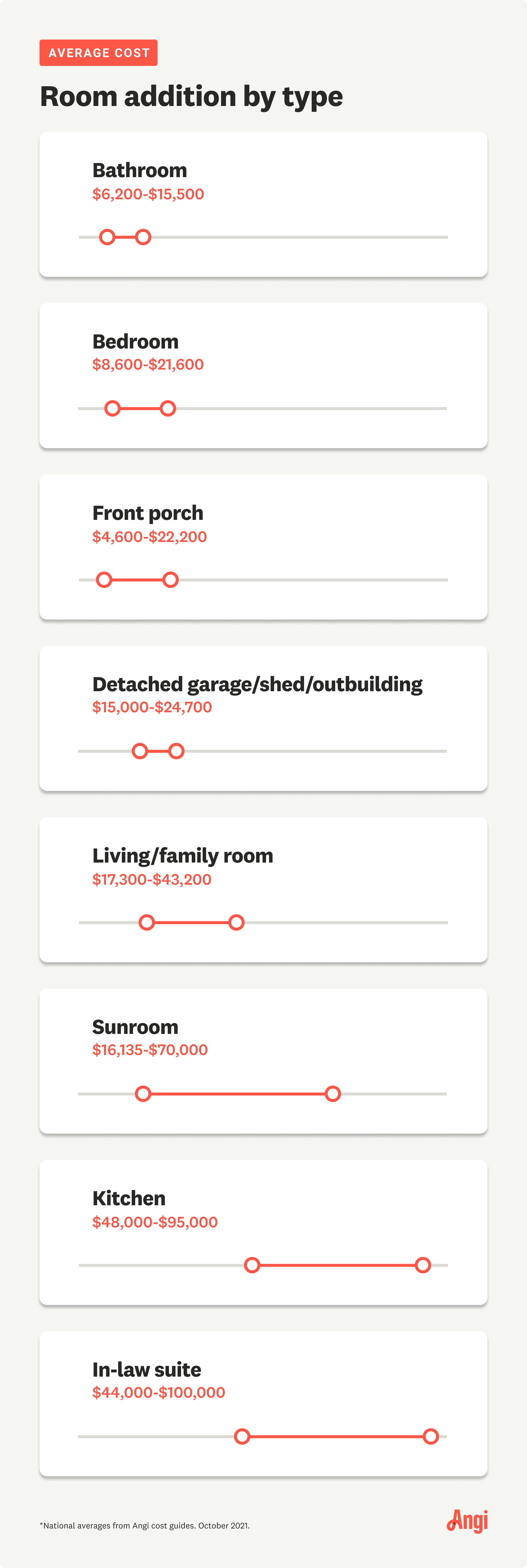
Keep in mind that adding a new addition to your home is a complex project that often requires building permits and work from various pros, including electricians, structural engineers, plumbers, roofers, and more. Here’s a look at some of the labor fees most of these tradespeople charge:
Plumber: $50–$200 per hour
Roofer: $40–$80 per hour
Carpenter: $75–$100 per hour
Structural engineer: $100–$200 per hour
HVAC technician: $50–$100 per hour
Interior painter: $20–$50 per hour
Electrician: $40–$100 per hour
But for many homeowners, the high price tag associated with building an addition is well worth the investment. Not only will additional living space add value to your home, but it will also offer you, your family, and your guests extra space to spread out and enjoy life.
Adding a Bathroom
While bathroom remodels topped the list of long-term home improvement projects, homeowners are eyeing one more bathroom-specific job. About 21% of surveyed homeowners say they want to add another bathroom to their home in the next five years.
There are a few ways to make the bathroom addition of your dreams into a reality. You can convert a small room, such as a laundry room or large closet, into a new bathroom. Or you can capitalize on the extra space in an attic, basement, or garage by building a bathroom in those areas. Some homeowners even opt to split one large bathroom into two separate bathrooms.
The cost of adding a bathroom depends on which method you choose. For instance, converting a laundry room into a bathroom is less expensive, ranging from $5,000 to $12,000, while building a new bathroom in a primary suite can run as much as $35,000 to $100,000.
As tempting as it may be to take on this type of renovation project by yourself, it’s not recommended. Adding a bathroom requires electrical and plumbing work that is best left to professionals. You should call a local home remodeling contractor who specializes in bathroom construction to handle this job for you.
Converting a Garage to a Gym
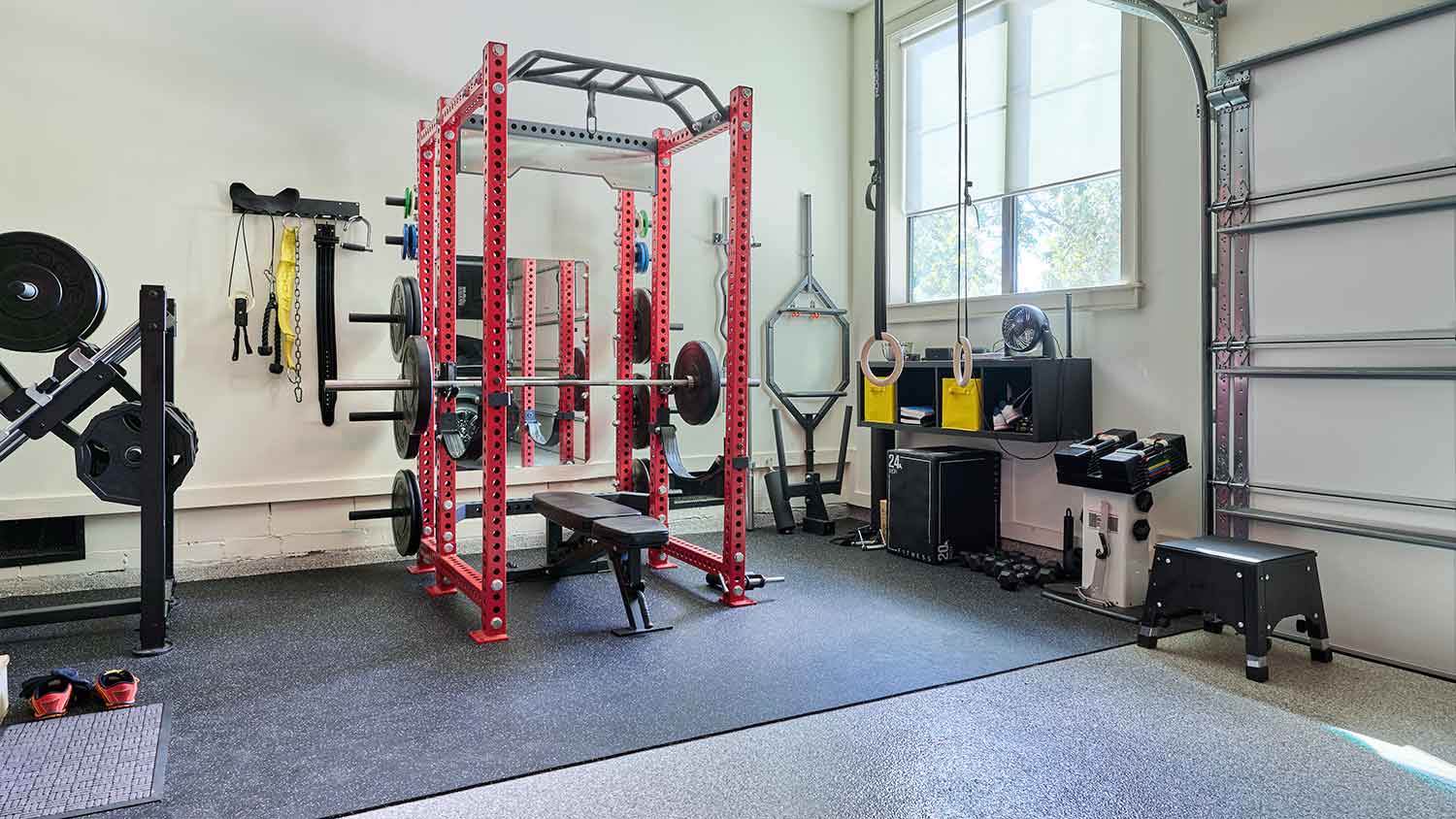
Another way homeowners plan to improve their home enjoyment is by converting their garage space into functional living areas. Specifically, Angi’s 2023 State of Spending Report found that 20% of homeowners plan to convert their garages into a gym.
Converting a garage into a living space costs around $15,000, though it ranges between $5,700 and $24,000. Some budget-friendly gym garage ideas include laying down foam tiles for gym flooring and installing a ballet bar. You can also make use of the space by organizing dumbbells and yoga mats on DIY shelves. With these small, simple changes, you can enjoy virtual workout classes in your garage while saving on in-person lessons.
For more extensive garage-to-gym conversions, it’s best to hire a local carpenter to help you reach your home fitness goals.





- Carpentry
- House Framing Companies
- Baseboard Installation
- Subcontractors
- Pole Barn Builders
- Elevator Companies
- Grab Bar Installation
- EV Charger Installer
- Caulking Services
- Walk-In Tub Installers
- Attic Ladder Installation
- Bathroom Fan Installation
- Bathroom Vanity Installation
- Tub to Shower Conversion
- Balcony Contractors
- The Top 10 Home Improvement Ideas of 2024
- How to Remodel a Bathroom: Everything You Need to Know
- Home Renovation Cost Estimator for Planning and Budgeting
- What Are the Best Bathroom Upgrades for Resale Value?
- 34 Modern Upgrades That Add Value to a Home
- Explore the 10 Most Popular Home Remodeling Projects
- 13 Common Mistakes to Avoid When Renovating Your Bathroom
- 11 Must-Know Bathroom Remodeling Tips for Building Your Perfect Space
- What You Should Know Before Adding a Bathroom to a Basement
- How to Build a House: Your Complete Guide to the Home-Building Process














